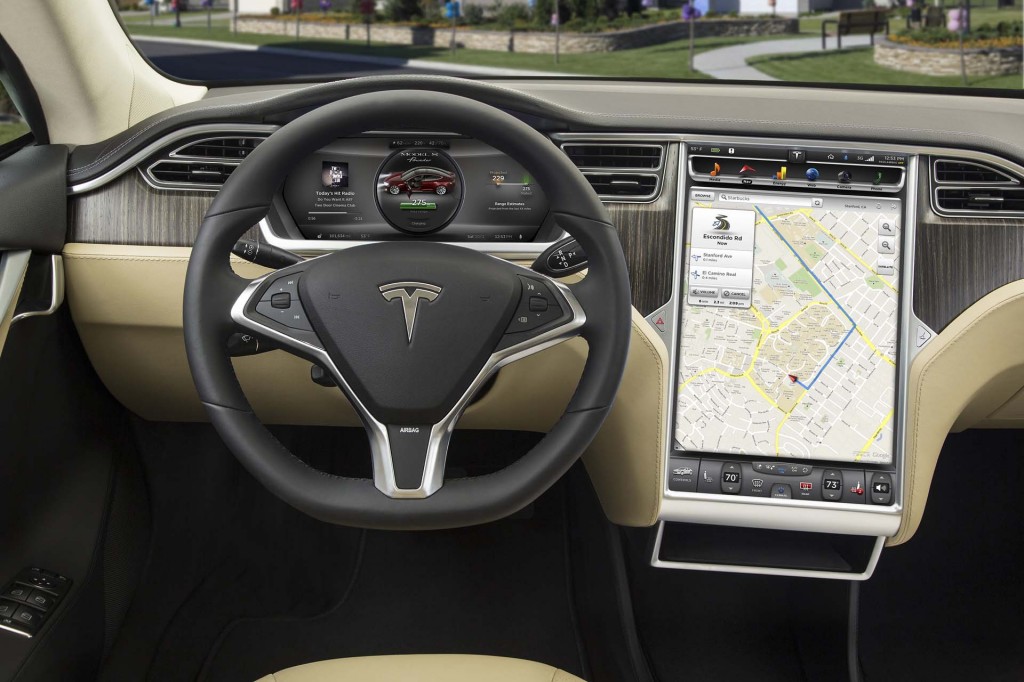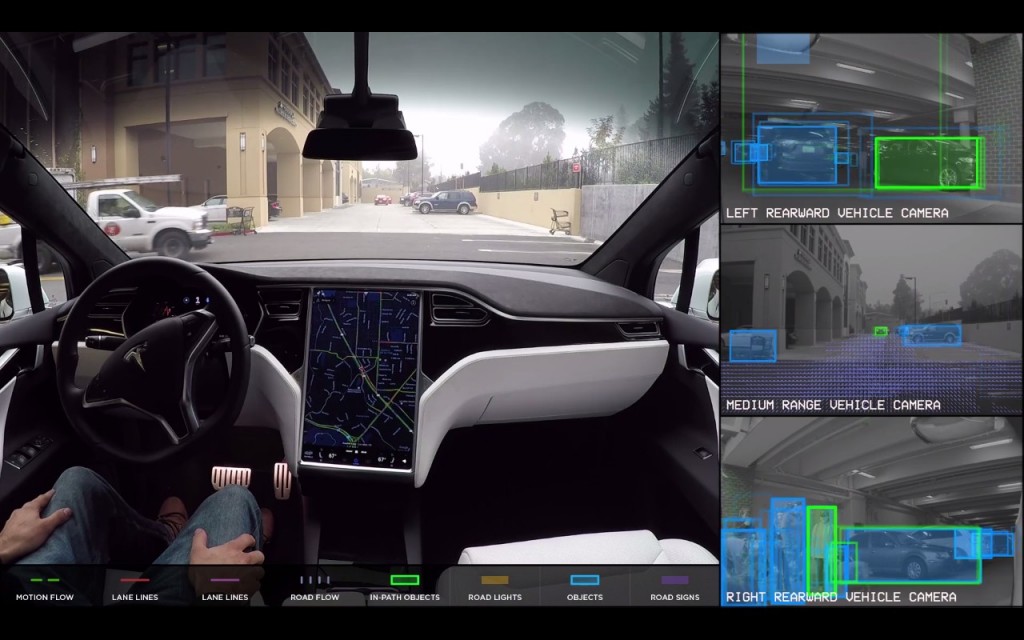Tesla Motors is now beginning to roll out upgraded software to accompany the more complex suite of sensors known as "Hardware 2" that launched in October.
All Model S and Model X electric cars built since then have this array of eight cameras, 12 ultrasonic sensors, as opposed to the less-elaborate "Hardware 1" package used previously.
But while they have more sensors, "Hardware 2" cars have until now lacked some of the features of Tesla's Autopilot driver-assist system offered on earlier Tesla cars.
DON'T MISS: Tesla upgrades self-driving sensors, hardware; full autonomy test next year?
That's what this latest software update aims to correct, although it isn't widely available just yet.
"HW2 Autopilot software uploading to 1,000 cars this eve. Will then hold to verify no field issues and upload to rest of fleet next week," Tesla CEO Elon Musk tweeted on Saturday.
Musk had previously tweeted that a "bug that shows up when booting from a subzero cold-soak" had held up the launch.

2017 Tesla Model S
The "Hardware 2" suite will form the foundation for future Tesla self-driving cars, Musk has indicated, although since its October launch, "Hardware 2" cars have been less capable than their "Hardware 1" predecessors.
Cars without the updated software lack certain features previously available as part of Autopilot, including automatic emergency braking, adaptive cruise control, and active lane control.
This is thought to be related to Tesla's switch from cameras supplied by Mobileye to Nvidia-supplied cameras.
MORE: Why did Tesla take capabilities out of latest Model S + Model X?
Tesla still considers Autopilot to be in the "beta," or development, stage, but views its real-world use by customers as vital to the development of both the driver-assist system itself and future autonomous cars.
Separately from Autopilot (which, despite its name, does not enable autonomous driving), Tesla is testing prototype self-driving cars on public roads.
For both Autopilot and these prototype autonomous cars, Tesla can leverage the data-collection and "fleet learning" capabilities of its software.

Tesla self-driving demonstration video screenshot
Customers who opt in can allow Tesla to collect data, allowing the system to "learn" how to negotiate new sections of road by monitoring how human drivers do it.
When he announced "Hardware 2" back in October, Musk said Tesla may be able to conduct an ambitious autonomous-driving test in the coming year.
He said his goal would be for a self-driving Tesla vehicle to leave Los Angeles, take one or more occupants to New York City, and park there without any driver input.
Musk appears confident that the technology is nearly ready, although he has said that regulatory issues may delay the commercialization of self-driving cars.
_______________________________________________











